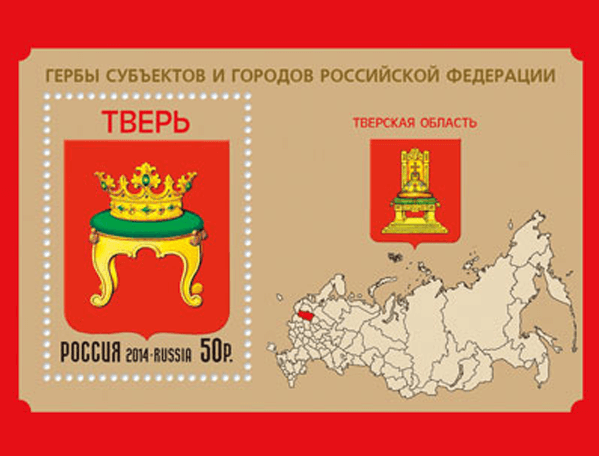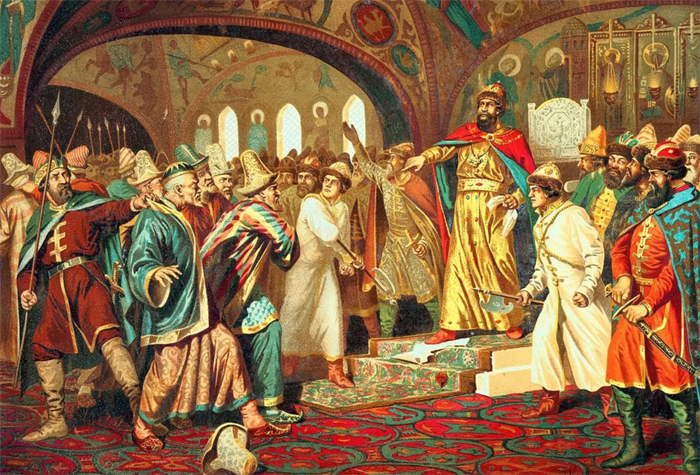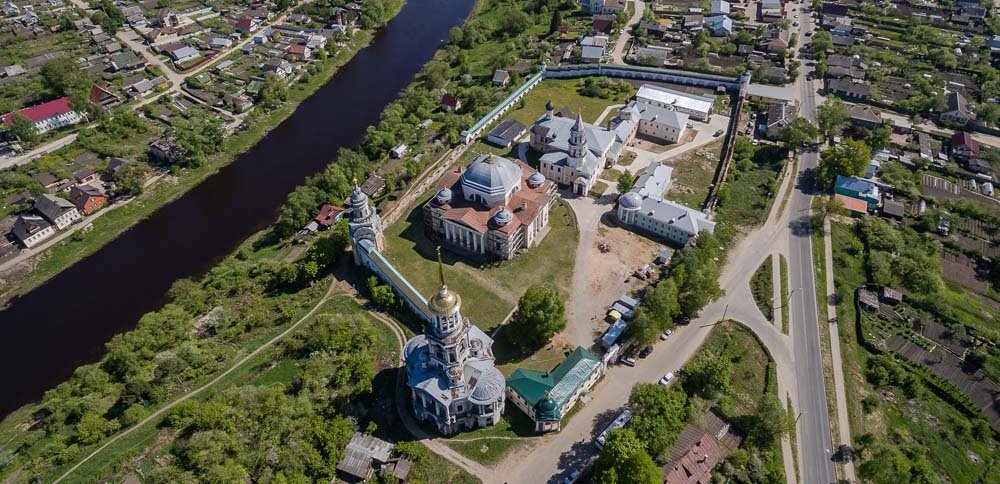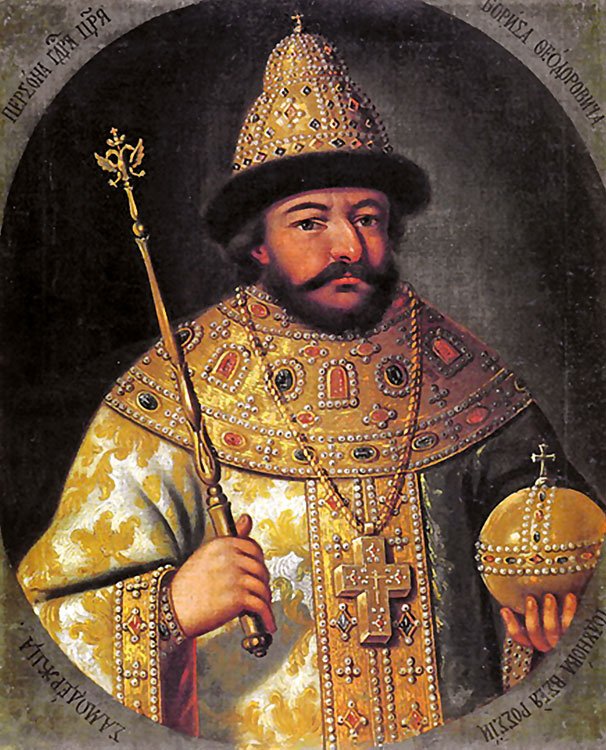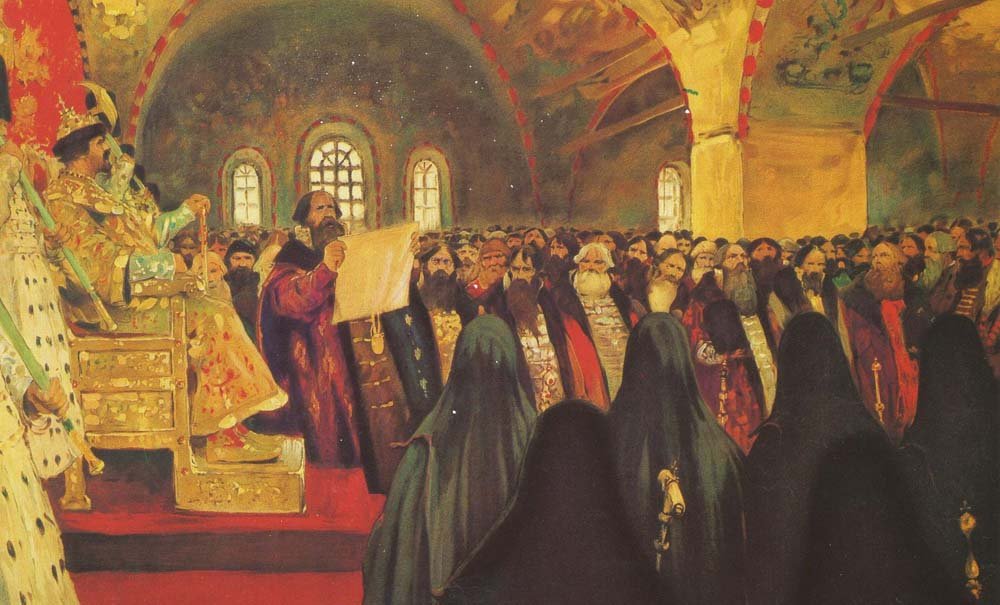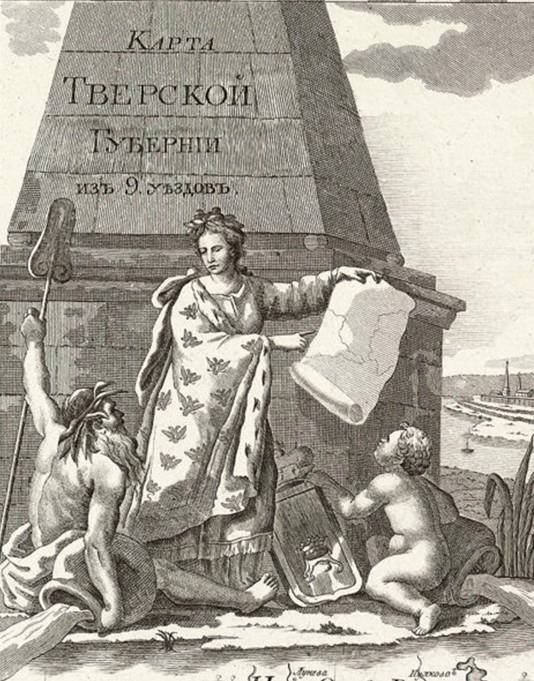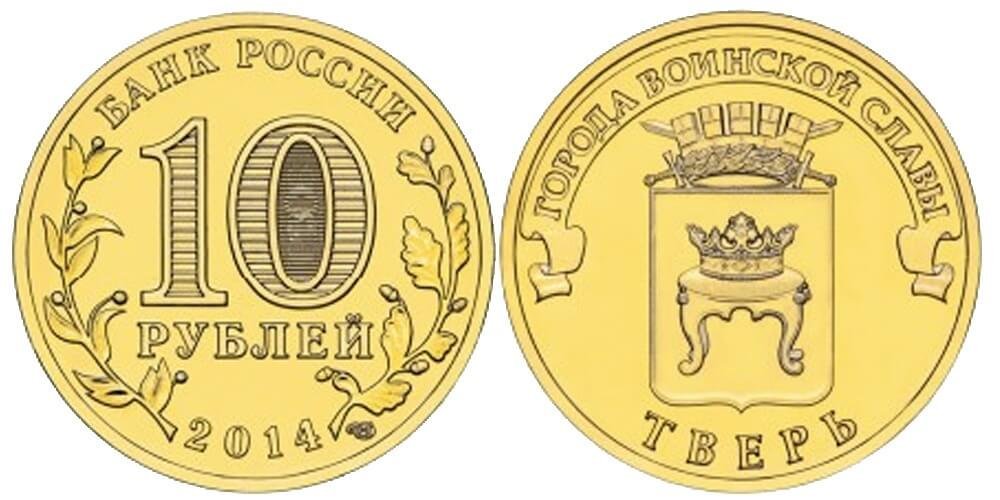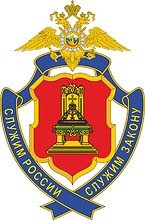The confrontation between Moscow and Tver lasted two hundred years. If not for the princely cruelty and cunning, the main city of Russia could be located much further north.
Judging by the first mention in the annals, Tver is 12 years older than Moscow. However, due to its favorable location on the trade route from Novgorod to northeastern Russia, Tver grew and became rich very quickly. Already in the XIII century, the city seriously claimed the primacy among the Russian lands.
Moscow could only dream of such splendor at that time. Daniil Alexandrovich, who ruled there, was considered a petty prince.
The symbol of the Grand Duchy of Tver. From the coin of Mikhail Borisovich, Grand Duke of Tver. 1470s.
Around 1247, Tver was allotted to Prince Alexander Yaroslavich Nevsky, between 1252 and 1255 passed to his brother Yaroslav Yaroslavich, the ancestor of the Tver princely dynasty. In 1247, Tver became the capital of the Principality of Tver. The historical core of ancient Tver was the Tver Kremlin.

Grand Duchy of Tver
The geographical location of Tver on an important trade route connecting with northeastern Russia, and its relative distance from the Horde, contributed to the influx of people from other Russian lands to the region. The city grew rapidly. In 1265, Tver became the center of the diocese . Even the devastating fires of 1276 and 1282 typical of wooden old Russian cities could not prevent the growth of the city.
Тhe growth of the city is due primarily to the fact that the political role of Tver has changed. In 1264, Tver Prince Yaroslav became the Grand Prince of Vladimir, but remained to live in Tver.Under the successor of Yaroslav, his son, Prince Mikhail Yaroslavich , in Tver, for the first time in Russia, after a 50-year break, chronicles and stone building were resumed .
The stone Three-domed Church of the Assumption was built in the Otroch Monastery and the Transfiguration Cathedral. Along with the Kremlin, there were growing outposts, inhabited mainly by artisans.

Evidence of the increased power of Tver was the fact that in 1293 the Mongol-Tatar commander Duden did not dare to storm the city. The Tver princes, waging a struggle for the great reign of Vladimir, tirelessly strengthened the city. The inhabitants of Tver were one of the first to rise in an armed struggle against the Horde: in 1317 they defeated the army of the Tatar commander Kavgadyi and Moscow Prince Yuri in the battle of the village of Bortenevo (Battle of Bortenev). In 1323-1325, the stone church of Fyodor was built at the mouth of the T’maki.
In 1320, Princess Anna married her eldest son Dmitry to Mary, daughter of the Grand Duke of Lithuania Gediminas. Since that time, Tver has established ties with the Principality of Lithuania that lasted until 1488.
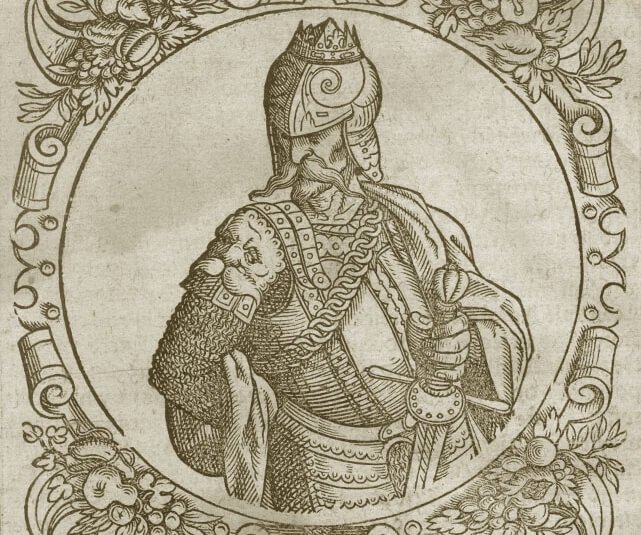
In 1326, Alexander Mikhailovich became the Grand Duke of Tver.In the summer of 1327, after the arrival of the Khan’s ambassador Shevkal to the city, rumors spread about the imminent conversion of the Tverites to Islam and the expulsion of Alexander from the Tver throne.

Although Alexander himself called for “enduring,” a powerful anti-Horde revolt broke out in Tver on 15 August, 1327.

With the help of Moscow Prince Ivan Kalita, it was brutally crushed, and Tver ravaged. Alexander Mikhailovich, whose role in the uprising was not finally clarified, fled to Pskov.
Ivan I Danilovich Kalita (Russian: Ива́н I Данилович Калита; 1 November 1288 – 31 March 1340 or 1341) was Grand Duke of Moscow from 1325 and Vladimir from 1332.
The suppression of the rebellion marked the beginning of the decline of the political influence of Tver.
Saint Dmitry Ivanovich Donskoy (12 October 1350 – 19 May 1389), son of Ivan II the Fair of Moscow (1326–1359), reigned as the Prince of Moscow from 1359 and Grand Prince of Vladimir from 1363 to his death. He was the first prince of Moscow to openly challenge Mongol authority in Russia. His nickname, Donskoy, alludes to his great victory against the Tatars in the Battle of Kulikovo (1380)
In the 14th century, in an ongoing battle with Moscow, the Tver princes continued to strengthen the city, in 1372 a moat was dug and a shaft was laid from Volga to Tmaki (in 1375, Moscow Prince Dmitry Ivanovich (Donskoy) could not take Tver with a large army).
Large construction work was carried out in Tver in 1387, 1395, 1413 and 1446-47 (as a rule, they were associated with complicated political situation and the threat from Moscow).
Speaking from the end of the 13th century as an active opponent of the Horde, Tver was subjected to repeated attacks by the Mongol-Tatars and Moscow until the second half of the 15th century.
In this struggle, Tver gradually lost its primacy among the ancient principalities in North-Eastern Russia. The role of the unifier of Russian lands was entrenched in Moscow. Intense struggle undermined the forces of Tver, however, in the 14th and 15th- centuries, it remained a major trade, craft and cultural center, one of the most developed Russian cities.
In the first half of the 15th century under Boris Alexandrovich Tver survived the last rise of its power as the center of an independent principality. Extensive construction unfolded. The Kremlin built a stone princely palace, the second in time after Bogolyubsky in North-Eastern Russia; stone cathedral bell tower (1407); the stone churches of Ivan the Merciful (1420), Boris and Gleb (1438), Michael the Archangel (1455); stone churches in the Fedorovsky and Zheltikovo monasteries. The economic growth of the city was accompanied by extensive economic ties and diplomatic activity (the journey of Athanasius Nikitin , the participation of the Ambassador of Tver Prince Thomas in the Florence Cathedral).
Ivan III Vasilyevich (the Terrible) – 22 January 1440. Moscow – 27 October 1505), also known as Ivan the Great, was a Grand Prince of Moscow and Grand Prince of all Rus’. Ivan served as the co-ruler and regent for his blind father Vasily II from the mid-1450s before he officially ascended the throne in 1462.
He tripled the territory of his state, ended the dominance of the Mongols/Tatars over Russia, renovated the Moscow Kremlin, introduced a new legal codex and laid the foundations of the Russian state. His 1480 victory over the Great Horde is cited as the restoration of Russian independence 240 years after the fall of Kiev to Mongols’ invasion.
In 1488, Ivan III annexed Tver to the Principality of Moscow, and the Prince of Tver, Mikhail Borisovich, led to the Grand Duchy of Lithuania.
List of Princes of Tver
- 1246–1272 Yaroslav
- 1272–1285 Svyatoslav
- 1285–1318 Michael the Saint
- 1318–1326 Dmitry the Terrible Eyes
- 1326–1327 Alexander I
- 1328–1338 Konstantin
- 1338–1339 Alexander I
- 1339–1346 Konstantin
- 1346–1351 Vsevolod
- 1351–1368 Vasily of Kashin
- 1368–1399 Mikhail II, “Grand Prince of Tver”
- 1400–1425 Ivan
- 1425 Alexander II
- 1425 Yury
- 1425–1461 Boris the Great
- 1461–1485 Mikhail III the Exile
In 1485,Ivan III of Moscow conquered Tver, and until 1490, his son Ivan the Younger governed the duchy.

Lithuanian Rule
In the second half of the 14th century.these lands became part of the Grand Duchy of Lithuania, Toropets became the center of extensive governorship, in which the governor, sent from Vitebsk, sat. In Lithuania as far back as the 14th century. Under the influence of Western European heraldic culture there were emblems that were already called coats of arms. In the Russian annals, this fact did not go unnoticed: “Having begun to reign over Lithuania, Viten invented a coat of arms for the whole Principality of Lithuania: a knight with a sword, riding on a horse which is now called the chase.”
This emblem subsequently became the emblem of the entire Grand Duchy of Lithuania and has not changed for many centuries.The emblem depicted an armed knight in a helmet on a white galloping horse, holding a shield in his left hand with two golden crosses connected into one, and a raised sword in his right hand. The horse is shown in fast running, as if in pursuit. Hence the name of the coat of arms – “Vytis” (The chaser).
Mikhail II – “Grand Prince of Tver” (c. 1375)1368–1399
Drawing print of the Grand Duke of Tver and Vladimir Dmitry Mikhailovich. The beginning 14th century
Boris the Great – 1425–1461
The year 1425 was devastating for the Principality of Tver. After the sudden death of Vasily I of Moscow, in the same year plague killed three Grand Dukes of Tver: Ivan Mikhailovich, Boris’ father Aleksander Ivanovich and brother Jury Aleksandrovich. Thus Boris Aleksandrovich became the ruler of the principality.
Domestic and Foreign Politics
At the beginning of his reign the muscovite Grand Prince Vasily II was very young, so the power was concentrated in hands of his warden Vytautas of Lithuania (1392-1430). That was the last chance for Tver to prevent Moscow from complete dominance. In 1427 Boris I came to the service of Vytautas together with Ivan III of Ryazan (1427-1457), still staying the ruler of Tver. However, in 1430 Vytautas died and in the Grand Duchy of Lithuania internal strife.was intensified. Meanwhile in Rus’ started the Muscovite Civil War (1425-1453), that weakened the Moscow princes and let the Principality of Tver more independence.
Standing Warrior – Tver – Grand Principality. Boris Aleksandrovich, 1426-1461. Denga n. d. 0.55 g. Huletzky/Petrunin 2781B.
In 1454, with the death of Dmitry Shemyaka, the war ended, and both Boris I and Ivan III of Ryazan swore their allegiance to Moscow. To tie this alliance, in 1454 Boris married his daughter Maria to Ivan (III) of Russia, the future Grand Prince of Moscow.
Boris promised Vasily II of Moscow (1415-1462) to always support their children and Moscow’s interests.
Dragon – Tver – Grand Principality. Boris Aleksandrovich, 1426-1461. Denga n. d. 0.54 g. Huletzky/Petrunin 2776A.
During his reign, the story of the Third Rome (“the second Constantinople”) was made up in Tver, when the monk Foma (Thomas) of Tver had written The Eulogy of the Pious Grand Prince Boris Alexandrovich in 1453.
Michael Borisovich – 1453 – 1505
During the rule of Michael, Borisovich coins with heraldic devices were printed coins with dragons, lions, eagles and two-headed eagles. These are from the Lithuanian era.
Drawing print of the Grand Duke of Tver Mikhail Borisovich. 1460s Knight with sword trampling a dragon
The Grand Duchy of Tver. Mikhail Borisovich (1461-1486).Denga.L.st .: “Four-legged to the right.In a circular legend: “PRINTING PRINCE GREAT MICHAEL.”Obst .: “The inscription: ” PRINTING PRINCE GREAT MICHAEL. ” Silver, 0.56 gr. Condition XF- (patina). Grishin I.V., Khramenkov A.V. “Types of Russian coins of the Grand Duchy of Tver” (2016) – No. 36.1.
Grand Duchy of Tver.Mikhail Borisovich (1461-1485 gg.).Denga. L.st .: “Four-legged to the right, with his head turned back, a circular legend, with abbreviations:“ PRINCE OF GREAT MICHAEL ”. Obst .: “Four-line legend, with abbreviations:” PRINTING PRINCE GREAT Michael. ” Silver, 0.55 gr. XF Condition (Ink Shine, Light Golden Patina .
Russia. Tver Principality, Michael Borisovich (1461-1485). AR denga, Bird type, ca 1480. Huletski-Petrunin, #2854. g. 0.55 mm. 16.00 RRR. About VV.
A special place is occupied by Tver silver coins (money) of the 1470s, on which the image of a two-headed eagle was placed.
Coins 82 Russia.Tver Principality, Michael Borisovich (1461-1485).AR denga, Double-headed Eagle type, ca 1475. Huletski-Petrunin, #2855. g. 0.53 mm. 14.00 RRR.
Muscovite Rule
In 1485 Ivan III of Moscow conquered Tver, and until 1490, his son Ivan the Younger governed the duchy

Simeon Bekbulatovich – Grand duke of Tver 1576-1585
SIMEON BEK BULATOVICH (before baptism: Sain Bulat Khan, (Tatar: ساین بولاط,) monastic name (1606) Stefan; January 1616, (Moscow).
Kasimov Khan in 1567-1573, son of Bek Bulat, great-grandson of Akhmat Khan, who ruled the Great Horde. Together with his father, he joined the service of Ivan IV Vasilievich the Terrible. He participated in the Livonian campaigns of the 1570s. In 1575, Ivan insisted on calling Simeon “the Grand Duke of All Russia” (1575-1576), although, in essence, Simeon did not have political weight and remained only a front man. Ca 1576 – the Grand Duke of Tver.

In the collection of portraits of the Nesvizh Castle of the Radziwills. Formerly alleged to represent Prince Mikhail Borisovich
The grand duke wearing a fur cap and a silk yellow dress and a like cloak lined of fur. As the spots are tripartite the skin must be of a spotted panther (Panthera pardus – Felidae) which became (completed with a panther’s mask) the 15th century Persian insignia of rank of a commander of the third rank and was borrowed from the Mongol system of military badges of rank.
The first mention of Simeon in the sources is a reference to a certain Sail-Bulat in the Supplement to the Nikon Chronicle under 1561 as being in the entourage of his aunt, Princess Kochenei, when she married Ivan IV. Our earliest evidence that he was khan of Qasim comes from a statement that the Russian ambassador to Constantinople, Ivan Novosil’tsev, said to the Ottoman Sultan Selim II to that effect in 1570.
In 1575 (either September or October), Ivan IV appointed Simeon as Grand Prince of All Rus’ and styled himself merely as “Ivan of Moscow”. Historians have a number of opinions concerning why Ivan did this. According to the most popular theory by Giles Fletcher, the Elder, Ivan aimed to confiscate the land that belonged to monasteries without attracting the ire of the Church.
Simeon issued the decrees of confiscation instead of Ivan, while Ivan pretended to disagree. During his one-year “rule” in the Moscow Kremlin, Simeon married Anastasia Mstislavskaya, the great great-granddaughter of Ivan III.
In 1576, Simeon stepped down as Grand Prince of All Rus’ and was appointed Grand Prince of Tver’ and Torzhok.
In 1585, Tsar Fedor Ivanovich (1584-1598) removed his title as Grand Prince of Tver’ and Torzhok and confined him to his estate at Kushalov. In 1595, Simeon went blind. According to Jacques Margeret, Simeon blamed Spanish wine that Boris Godunov sent him for his birthday.
Borís Fyodorovich Godunóv (/ˈɡɒdənˌɔːf, ˈɡʊd-/; Russian: Бори́с Фёдорович Годуно́в; 1552 – 23 April [O.S. 13 April] 1605) ruled the Tsardom of Russia as de facto regent from c. 1585 to 1598 and then as the first non-Rurikid tsar from 1598 to 1605. After the end of his reign, Russia descended into the Time of Troubles.
When Boris was elected Tsar in 1598, he required those at the court to sign a loyalty oath, which prohibited them from recognizing Simeon as tsar or corresponding with him. False Dmitry I required Simeon to be tonsured at the Kirillo-Belozersky Monastery, where he took the monastic name Stefan on April 3, 1606. When Vasilii Shuiskii was elected tsar, he ordered the elder Stefan taken to the Solovki Monastery on May 29, 1606.
Sergey Ivanov’s Zemsky sobor (1908) – The Zemsky Sobor (Russian: зе́мский собо́р, IPA: [ˈzʲemskʲɪj sɐˈbor], lit. ‘assembly of the land’) was a parliament of the Tsardom of Russia’s Estates of the realm active during the 16th and 17th centuries.
In 1612, as the result of a decree issued by Prince D. M. Pozharskii and “on the advice of all the land” (zemskii sobor), Stefan was returned to the Kirilo-Belozersk Monastery. Under Tsar Mikhail Fedorovich, he returned to Moscow and resided in the Simonov Monastery until he died in 1616. He was buried in the Simonov Monastery next to his wife, who had died 7 June 1607, after having been veiled as the nun Alexandra.
Tver City and Province

The seal of Tver is represented by a drawing of a crown on a table on the fourth emblem on the dexter. The caption ПЕЧАТО ВЕЛИКАГО КНЯЖСТВА ТВЕРСКАГО however has landed around the fourth emblem on the sinister with the bear of Perm.
The stool is meant to be a credence table to expose the royal crown of the regalia. Usually, the appearance of the crown on the coat of arms is explained as a symbol of the former political status of the Tver Principality, and also as a tribute to the fact that it was the Prince of Tver who first had been called Grand duke of All Russia (1575-1576).
In 1604, a throne in oriental style was presented to the then reigning Boris Godunov (1598-1605) by the Shah of Persia Abbas I. (!587-1629) Such a throne appears on the arms of Tver.
Embroidered with silver and gold, the throne of Tsar Mikhail Fedorovich already contained the image of the throne under the crown for Tver land. The same is repeated in the first Russian collection of coat of arms “Titularnike”. The image from the “Titularnike” became the coat of arms of the Tver Grand Duchy, the background of the shield could be different, for example, on blue letter from Catherine I it is blue. In the end he turned red.
Arms: In a grassy field a chair without a back, on it two tasseled pillows, on top a crown with a cross. Caption: Тверь съцкий
Coats of arms of Tver and Tver land.
Coat of arms of Tver 1711. From a heraldic map of Peter the Great, 1711
Heraldry Office
In 1724 a Heraldry Office was founded in Russia and the post of Russian Herald was created. Its first official was Count Franz Matveevich (Martynovich) Santi. (1683-1758)
He was educated in Paris, where he studied history and science, “close to genealogy.” He served in the courts of many European sovereigns, in particular, with the Landgrave of Hesse-Homburg as Chief Marshal and Privy Councilor. After several years of service, he was invited by Peter I in 1724 to Russia “for the administration of heraldic art” and at the same time was appointed comrade of the herald master and ceremonial master.
Santi composed coats of arms for many Russian cities (including St. Petersburg and Tver) and gave external attributes to old coats of arms. Santi took drawings of the Titular of 1672 as the basis of the emblems , giving them a strict heraldic form: he changed the placement of figures in the shield, according to the heraldic rules that existed in Western Europe, he applied certain colors and metals, bringing them in strict accordance. To help translators and all those who will be associated with herbalism, he developed the “Blazon lexicon” – a heraldic dictionary. Some of his works fell into the Banner of Hearts. In February 1725 he was appointed chief master of ceremonies.
In 1727, for participating in the plot of Count P.A. Tolstoy, who had the aim of delivering the throne, after the death of Catherine I , the Duchess of Holstein Anna Petrovna, he was exiled to Siberia, where he was first held in the Yakutsk prison, handcuffed and then in the Verkholensk prison and the Ust-Vilyui winter hut. Elizaveta Petrovna regained freedom to Santi. He regained the rank of chief master of ceremonies, and was granted the rank of Actual Privy Councilor (1756).

Arms: Gules, a stool Argent with a crown Or on a pillow Vert tasseled Or. Perhaps the “source of inspiration” for Franz Matveevich Santi of the Tver coat of arms was the emblem from the book “Symbols and Emblems”, popular in the 18th century, under the motto “Lovely Thing”. The emblem depicted a crown on a pillow.

However, Tver was not only a city, but also a large administrative center. The lands adjacent to Tver formed the Tver Uyezd, the Tver Province, from 1778 – the Tver governorship, and from 1796 – the Tver province.
The coat of arms of Tver was approved on 10 October 1780 (PSZ RI No. 15073): It is: Arms: Gules, on a stool, a crown Or on a pillow Vert tasseled Or.
Arms of Tver. In The Manifesto on the Complete Arms of the All-Russian Empire. 1800.
His official dress: a red vest and trousers and a blue jacket. White stockings and black shoes with silver clasps.
His coat of arms: Gules, a crown Or on a tasseled pillow Vert on a table Or.
At the end of the 18th century, the emblem of Tver (approved on 10.10.1780) was used as a viceroyal coat of arms – “In a scarlet field, a golden throne, on a green pillow a golden crown.” For example, in the publication “Image of Provincial, Viceroyalty, College and All Civilian Uniforms” (1794), such a description of the coat of arms of Tver governorship is given: “a golden crown in a red field on a green pillow”.
The crowned arms of Tver on a map of the Governorate, 1800. The cloak of the Virgin of Tver strewn with russian eagles
The situation changed only in 1856. By this time, the administrative division of Russia in the province, which had existed since the 1770s, had become so habitual that it seemed indestructible forever. Therefore, the government came to the conclusion that the provinces should have their own special emblems. At the same time, they treated the tradition with care: the new provincial emblems were compiled on the basis of the emblems of the capital cities of the provinces. The composition of the city coat of arms was taken as a basis, but some changes were made to it – not the most decisive at first glance, but telling the provincial coat of arms of obvious heraldic differences from the city. The city emblems, after the creation of the provincial ones, did not go out of use at all – they still performed all their functions, but now exclusively as the emblem of the city.
The coat of arms of Tver province was approved on 8 December 1856.
Basically, the provincial coat of arms retained all the main motives and elements of the coat of arms of the city of Tver: the same colors (red field, gold figures), the same basic figures: the throne on an eminence, on the throne – the crown. However, the shape of the throne changed -it got a high back, and, more importantly, the crown changed: instead of the royal crown of the coat of arms of the city of Tver, the Monomakh’s Cap was placed on the stool Also the shield was crowned with the Russian Imperial crown and surrounded by two golden branches of oak tintertwined with the ribbon of the Order of St. Andrew (Russia, 1698).
Kalinin Region 1935-1990
In January 1929, the Central Industrial Region was created (from 3 June 1929 – the Moscow Region), which included the Tver District. In 1931, Tver was renamed the city of Kalinin. Kalinin region was formed on 29 January 1935.There was no coat of arms and flag of the region in the Soviet period.
In 1990 the ancient name of Tver was restored for the city and the region
Tver City & Region 1990-present
On 25 May 1999, by the Decision of the City Duma No. 66, the historical emblem of Tver was restored.
The coat of arms of Tver corresponds to the historical coat of arms of Tver, approved on 10 October 1780 by Empress Catherine II and included in the Complete Collection of Laws of the Russian Empire. The heraldic description of the coat of arms reads “in a scarlet (red) field on a golden chair, covered with green, with golden tassels, a pillow – a golden crown with five visible leaf-shaped teeth.”
By the decision of the Tver City Duma of February 22, 2000 No. 32, the description of the coat of arms was slightly corrected:
“In a scarlet field on a golden chair (without back), covered with a green a pillow with golden tassels and a cord around the edge, – a golden crown decorated with green gems with five visible leaf-shaped points – three of which large, interspersed with two smaller ones”
The authors of the reconstruction of the coat of arms: Lavrenov Vladimir Ilyich, Davydov Valery Alekseevich, Ushakov Alexey Veniaminovich, Fedorov Konstantin Efimovich. The coat of arms is entered in the State Heraldry Register No. 700.
On 4 November 2010, President Medvedev signed decrees conferring the title of “City of Military Glory” (ГОРОД ВОИHСКОЙ СЛАВЫ) to Vladivostok, Tikhvin and Tver for the courage, stamina and mass heroism shown by the city’s defenders in the struggle for freedom and independence of the Fatherland. On commemorative coins from the series “the city of military glory” (2014), the coat of arms of Tver is depicted with a crown, behind which two swords in saltire.
Emblems of the department of internal affairs (UMVD) in the Tver region
The arms of Tver region
Crest: The achievement of the MVD
Motto: On a blue ribbon «СЛУЖИМ РОССИИ, СЛУЖИМ ЗАКОНУ». (Service of Russia, service of the law) in golden lettering
Until 2012, the motto of the Russian Ministry of Internal Affairs was “СЛУЖА ЗАКОНУ – СЛУЖИМ НАРОДУ” written on the ribbon of the large emblem and on the ribbon on the badge.
City of Tver in Stamps
…

